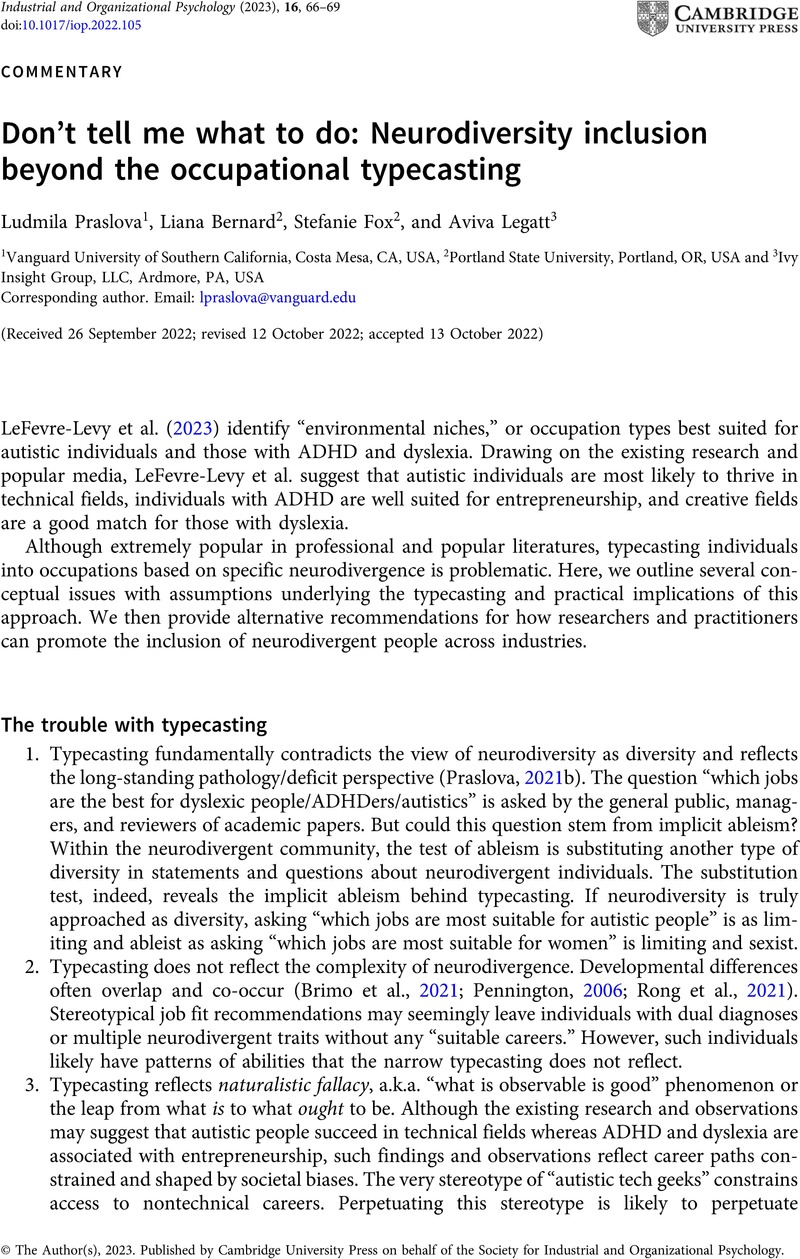Crossref Citations
This article has been cited by the following publications. This list is generated based on data provided by Crossref.
Garrison, Elizabeth
Singh, Dalvir
Hantula, Donald
Tincani, Matt
Nosek, John
Hong, Sungsoo Ray
Dragut, Eduard
and
Vucetic, Slobodan
2023.
Understanding the experience of neurodivergent workers in image and text data annotation.
Computers in Human Behavior Reports,
Vol. 11,
Issue. ,
p.
100318.
Comer, Debra R.
2024.
Neurodiversity and Work.
p.
107.





